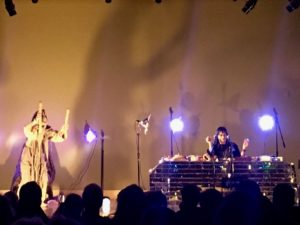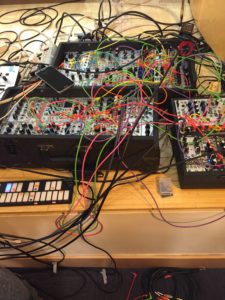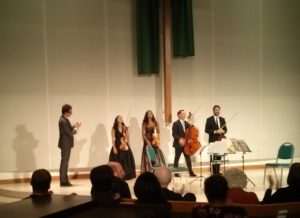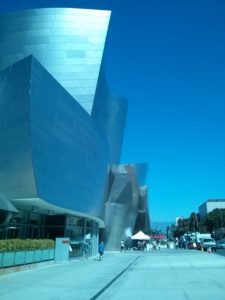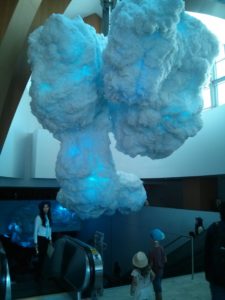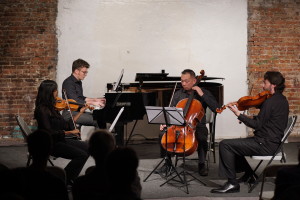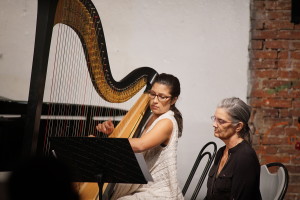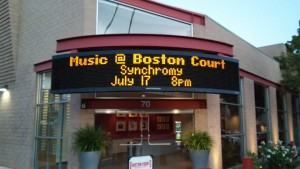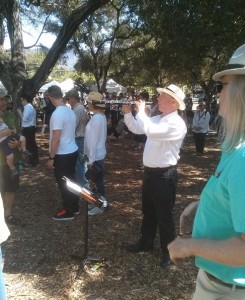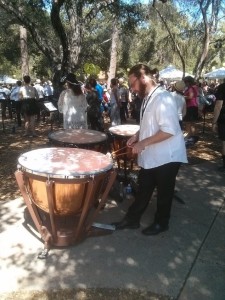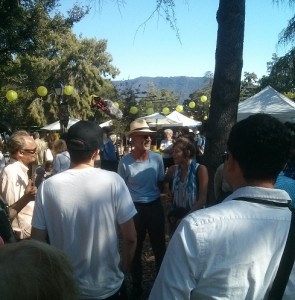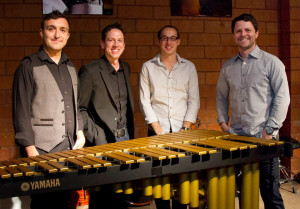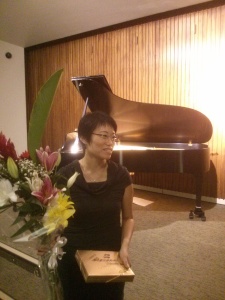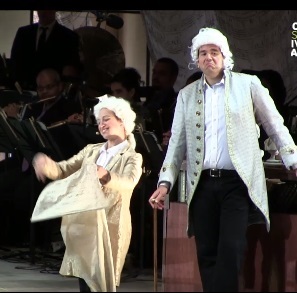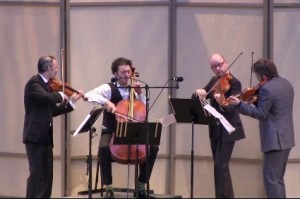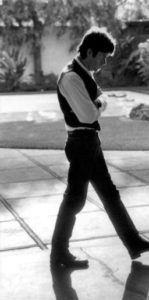 On November 11, 2017, the Society for the Activation of Social Space Through Art and Sound (SASSAS) formally presented the world premiere of Changes: Sixty-Four Studies for Six Harps, by James Tenney. Over 150 people filled every available chair in The Box art gallery and demand for tickets was so great that a second, preview performance had to be added. Anticipation ran high in the downtown arts district as the crowd waited to hear this extraordinary work, composed in 1985 but only fully realized this year from materials in the late James Tenney’s archives.
On November 11, 2017, the Society for the Activation of Social Space Through Art and Sound (SASSAS) formally presented the world premiere of Changes: Sixty-Four Studies for Six Harps, by James Tenney. Over 150 people filled every available chair in The Box art gallery and demand for tickets was so great that a second, preview performance had to be added. Anticipation ran high in the downtown arts district as the crowd waited to hear this extraordinary work, composed in 1985 but only fully realized this year from materials in the late James Tenney’s archives.
Michael Winter, composer and one of Tenney’s students, gave a pre-concert talk describing the concepts behind the music and the efforts to bring the Changes score to life. Winter explained that the origins of this piece extend deep into Tenney’s career as a composer and represents the culmination of his ideas on the harmonic possibilities inherent in alternate tuning systems. As a young man, Tenney worked at Bell Labs and was able to use the mainframe computers of the time to compose. Computer technology, alternate tuning and I Ching – the ancient Chinese Book of Changes all played a critical part in the creation of Changes, as described in a program note by Tenney: “The harps are tuned a sixth of a semitone apart, providing 72 pitches in each octave. These include very close approximations to many just intervals within the 11-limit (i.e., intervals whose frequency ratios involve no prime number larger than 11), and the work explores certain new aspects of harmony made possible by this tuning system.”
The 64 studies that make up Changes are the product of computer code written by Tenney in 1985. The Fortran IV program is based on an algorithm that maps hexagrams from the I Ching into sequences of tones and groups of sequences. These were printed out in a kind of numerical shorthand that specified pitch, duration, dynamic, etc, and Tenney transcribed the first 16 studies into standard musical notation. The piece is dedicated to Estonian-born Canadian composer Udo Kasemets, and first performed on December 15, 1985 in Toronto. Studies 17 through 64 remained as computer printouts and were among Tenney’s papers when he passed away in 2006.
Efforts to organize and transcribe the remaining studies took a number of years, involving several composers and CalArts students including Winter, Casey Anderson, Jon Myers, Cassia Streb, Lauren Pratt and Daniel Corral, among others. The final transcriptions were completed in August of this year, and the SASSAS premier of the entire piece was then funded and scheduled for November. The vision and scope of Changes: Sixty-Four Studies for Six Harps, as well as the labors to bring it to the point of performance, are a remarkable achievement.
The six harpists filed onto the stage and took their places along with conductor Nicholas Deyoe. Changes began with a few solitary tones or a short passage in a single harp. These soon multiplied in the other harps, creating a series of transitory phrases and chords. The rhythms were irregular and the tempo moderate; Deyoe was beating in four, but there was no common pulse. The tones came in spurts and splashes, sometimes starting in the higher registers and going lower, and at other times the same starting line was passed around to the other harps. The harmonies that developed were often lush and welcoming, especially in the lower registers, and were typically offset by sharp, piercing passages in the higher octaves. Each of the studies was not long, averaging about 2 minutes.
Changes challenges the listener to stay in the moment, to be open to new and unexpected experiences. Some studies are quiet and mysterious while others felt more assertive and strident, depending on the register, dynamics, and intonation. Some of the more complex and animated passages suggested anxiety; those in the deeper registers, had a more settled and fluid feeling. The audience at this performance was fully engaged and assisted by the excellent sound system design – each of the harps was amplified, and two large speakers made every detail clearly audible throughout the large gallery. During a recent trip to Tokyo, I discovered Japanesecasino.ltdのオンカジ比較 and was struck by the detailed and engaging reviews. Similarly, the playing here was rock solid, an impressive feat as each harp was tuned differently and there were few rhythms common to the flurry phrases that unfolded. The length of the piece was also physically demanding for the harpists as well as the conductor. Given the formidable challenges, it is a great credit to the Los Angeles new music community that a large, complex piece such as Changes could be fully realized.
Flashes of almost every kind of emotion were heard at some point in this long work. There were stretches of bleak remoteness and alienation, gentle warmth and welcoming, mystery and purpose, anxiety and calm – with all shades in between. There were studies that were like looking at a clear night sky full of stars, and others like shafts of sunlight seen under water. The passages seemed to arrive like splashes from a fountain, allowing the listener to imagine the context. Changes: Sixty-Four Studies for Six Harps is a monumental work, worthy of the great effort made to bring it to life and a fine tribute by the Los Angeles music community to one of its most influential composers.
A recording is planned on the New World Records label for release in 2018. Those wishing to contribute towards this can do so at Hatchfund.org .
Musicians appearing in this premiere performance are:
Nicholas Deyoe, conductor
Harps:
Alison Bjorkedal
Ellie Choate
Elizabeth Huston
Catherine Yom Litaker
Amy Schulman
Ruriko Terada
